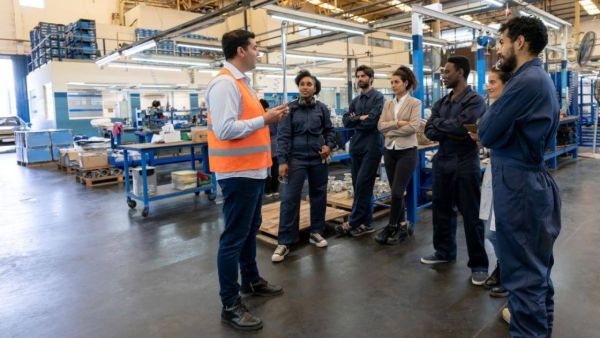
Manufacturing Ranking
The world's manufacturing activities intensified again in the month of October, in which Asian countries especially India, Thailand and Vietnam showed growth. According to S&P Global data, Asia's manufacturing PMI (Purchasing Managers Index), excluding China and Japan, has reached a 14-month high. This shows that despite global trade tensions and geopolitical uncertainty, the pace of recovery in Asia is strengthening.
Chris Williamson, Chief Business Economist of S&P Global Market Intelligence, said India led the global manufacturing growth, but Thailand and Vietnam also performed well in October. The confidence of the producers there has returned as concerns regarding America's tariff policy have reduced. He said that Thailand's PMI reached its highest level since May 2023, while Vietnam's PMI was the highest since July 2024.
India once again won the manufacturing ranking. HSBC Manufacturing PMI increased from 57.7 in September to 59.2 in October. The reason for this was said to be the demand of the festive season and the government's improvement in GST rate. This is the fifth time in the last seven months that India's PMI remained above 58, which shows that the Indian manufacturing sector remains strong despite global challenges. PMI being above 50 indicates growth. Pranjal Bhandari, Chief India Economist of HSBC, said, business sentiment going forward is quite positive, as expectations regarding GST reforms and good demand are strong.
A good surge in manufacturing was also seen in other countries of Asia. Thailand's PMI increased for the sixth consecutive month from 54.6 to 56.6. Which is the biggest improvement after May 2023. Vietnam's PMI also increased from 50.4 in September to 54.5 in October, which is a record level of 15 months. A rise in new orders and export demand was seen here. S&P Global said new export orders saw a slight increase for the first time in a year, which supported overall business growth. Overall, the combined manufacturing PMI of ASEAN countries reached 52.7, the highest level in the last three years.
However, not all Asian countries could join this pace. China's PMI declined from 51.2 in September to 50.6 in October, due to decline in export orders. Factory activity in South Korea also remained weak due to domestic demand and the impact of US tariffs. Japan's PMI also declined slightly, which was attributed to lack of external demand and supply chain problems. Despite improvement in America and Europe, confidence is weak. There was a slight improvement in manufacturing in America and PMI increased from 52 to 52.5. Which is the fastest growth of new orders in the last 20 months. However, S&P Global's Williamson said, while the picture looks better on the surface, the internal situation is not so strong. Eurozone's PMI increased slightly from 49.8 to 50, while Britain's PMI increased from 46.2 to 49.7. That is, the decline has slowed down but there has been no complete recovery.
Despite India's strong performance, export orders slowed down slightly in October. The same trend was also seen in Thailand, China, Japan and South Korea. Only in Vietnam there was an increase in new export orders. Export demand remained weak worldwide. New export orders in the US and Europe also declined and business confidence declined. However, Eurozone manufacturers are still hopeful that production will increase in the next 12 months. At the same time, the atmosphere in ASEAN countries is more positive. Maryam Baloch, economist at S&P Global, said that if new orders continue to grow and prices remain stable, manufacturing in ASEAN countries can maintain its strong pace till the end of this year.